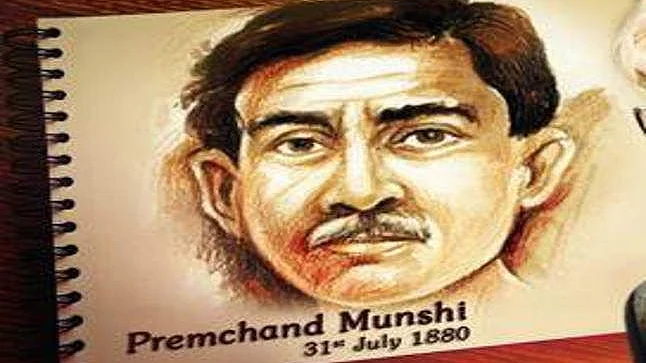Remembering Munshi Premchand on his 140th birth anniversary: The Jamia connection
Prem Chand wrote his last story ‘Kafan’ in the Jamia campus

It was hot and humid in Delhi when Munshi Premchand arrived from Bombay. He left Bombay on April 4, 1935. Himanshu Roy, the founder of Bombay Talkies, tried to convince Premchand to stay back but did not succeed. Premchand had gone there to try his luck in films.
Rather than going to Banaras straightaway, he stayed back in Delhi for a couple of days to spend quality time with his friends. In Delhi, he was the guest of Professor Aqeel, editor of Jamia Millia Islamia’s in-house magazine, Risala, who taught Urdu in Jamia.
Those were the days when the Jamia campus was at Karol Bagh. It was shifted from Aligarh. It came to Okhla later. Premchand was already a very respected name in literary circles when he came to the Jamia campus. He had already authored classics like Godan, Gaban, Nirmala, Rangboomi and several other brilliant stories. The Jamia community was ecstatic and started coming to the house of Aqeel Saheb when it learnt about the presence of Premchand in their campus.
On the second day of his stay in the Jamia campus, a ‘Meet the Author’ type get-together was organised. Premchand was happy to see many people curious about his literary journey. The mood was upbeat and electric in the campus.
During the course of animated discussion, Aqeel Saheb requested Premchand to write one story in Jamia campus itself before leaving for Banaras. The wordsmith did not disappoint the Jamia community as he wrote Kafan on that very night. It was a remarakable effort as Premchand never wrote stories on ‘request’ or ‘order’.
Kafan was originally written in Urdu.It is supposed to be the last kahani he authored before he died on October 8, 1936. Kafan was read in the Jamia campus in the presence of umpteen number of students and teachers. It was liked and debated there at a length. Later, Kafan was published in the December, 1935 issue of the quarterly Risala magazine.
“While the original story of Kafan remained intact in Urdu, one name of an important character was changed when it was published in Hindi. The central character of Madho became Madhav in Hindi,” says Professor Abdul Bismillah of the Hindi department of Jamia Millia Islamia.
Well, Kafan is a very poignant story revolving mainly around two characters - Ghisu and Madhav - who are poor and yet not keen to do any work to earn on a regular basis. Ghisu and Madhav are a father-son duo. Both just want to relax and rest all the time. Yet, they look for good food and booze. That habit of father-son proved very costly when Bhudhiya, the wife of Madhav, was pregnant. Sadly enough, the pregnant lady developed some complications and medical attention was required immediately.
However, the heartless Ghishu and Madhav did nothing to ensure that she got some medical care. As they were rank parasites, they had no money in their house. The poor lady died due to the lack of proper medical care.
Despite the abject poverty they were facing, Ghishu and Madhav did virtually nothing to earn. They lived on the mercy of villagers. Both were rank idlers. They had a notorious reputation in their village as well. Everybody knew about them. After the death of Bhudhiya, Ghisu and Madhav begged for some money from the rich and the powerful people of their village. Even though they were not liked by anybody, still people had given them money for the funeral of the poor lady. And imagine, the father-son duo bought liqour rather than the Kafan (Shroud) for final rites. That is heart wrenching. They fully enjoyed their booze session.
By the way, the original manuscript of Kafan in Urdu is now preserved in the Jamia library. Kafan in Hindi was first published in a magazine called Chaand in 1936, barely a few months before Premchand died.
Kafan apart, it seems that Premchand had high hopes from Jamia’s contribution to the field of education as early as in 1932. One can see a plaque outside Jamia's Premchand Archives & Literary Centre. In this plaque, the thoughts of Premchand on Jamia is there: “Jamia Millia is among those Muslim institutions that have been doing yeomen service in the field of imparting education.”
Clearly, Premchand knew as to how Jamia Millia Islamia was unique and different.
Follow us on: Facebook, Twitter, Google News, Instagram
Join our official telegram channel (@nationalherald) and stay updated with the latest headlines
